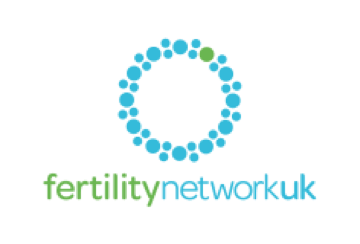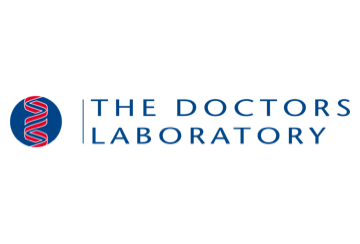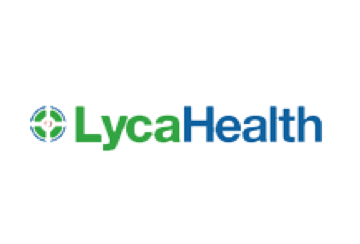Fertility Preservation
Freezing of gametes and embryos to preserve one's fertility for the future, is a well established way to plan for a pregnancy when one is ready to become a parent.
Egg Freezing
Egg freezing is the procedure of choice for those that want to delay their childbearing due to social or medical reasons. The procedure involves administering injections to stimulate the ovaries for around 12 days. Following this, the eggs are collected under sedation. The egg collection is a relatively non-invasive procedure and carries minimal risks. The eggs are cryopreserved on the day of egg collection.
Top Tips - Egg Freezing
Egg Freezing | Egg Vitrification | Fertility Preservation (1:09)
Play

Egg Freezing | Process (2:21)
Play

Egg Freezing | Advantages and Risks (1:37)
Play

Egg Freezing | Egg Collection Demo (1:27)
Play

Watch Jessica Wright - My Story
Play

Egg freezing or oocyte cryopreservation is a method of fertility preservation. As per data published by UK’s fertility regulator The HFEA in Sept 2018, egg freezing cycles are on the rise and currently make up around 1.5% of all fertility treatment cycles carried out across the UK with majority of treatments taking place in London.
The 1st birth from frozen eggs using vitrification was documented in 1999. This was followed by the HFEA permitting egg freezing treatment in the UK from 2000.
How are the frozen eggs used?
When one is ready to have a baby, the eggs are defrosted by a process called egg thawing. The freezing process hardens the layer surrounding the eggs and hence it is recommended to inject the sperm into the eggs using a process called intracytoplasmic sperm injection or ICSI. The fertilised egg is then observed in the laboratory until the embryo is transferred into the uterine cavity.
"91% of women using frozen eggs in a thaw treatment cycle were registered with a male partner at the time of egg thawing" HFEA.
There are 2 main reasons why women in the UK freeze their eggs:
• Social – to delay their child bearing whilst they find the right partner (46% of those who freeze their eggs are single), to pursue their career or because they are not ready to have children.
• Medical – they are having treatment for cancer which is likely to affect their fertility or they have other medical problems like severe endometriosis.
1. Your age at the time of starting treatment
As per the HFEA data, most women who froze their eggs in 2016 were over 35. The commonest age to freeze eggs was 38. However, the most common age women came back for fertility treatment to use their cryopreserved eggs was 40.
“There are many women freezing eggs into their 40s and even 50s. Given the scientific consensus around age-related fertility decline, it is not clear why patients of this age are freezing eggs and we would caution against this being a sensible option for this group of women.” HFEA
When should women be freezing their eggs?
‘Standard’ fresh IVF does not offer a solution to age-related fertility decline because it cannot reverse the egg degeneration that comes with getting older’. This is why the age a woman is when she freezes her eggs is so important. HFEA
In cases over the age of 35, we know there is a steep decline in fertility and this has an impact on both natural conception and IVF success rates. HFEA
The likelihood of a successful outcome following egg freezing is based on the age at the time of freezing one’s eggs. Hence, freezing eggs prior to early 30s would be the ideal time to have the best chance of a successful outcome in future. However, young women are likely to get pregnant spontaneously and are hence, are less likely to use their frozen eggs. The current 10-year legal limit on storage of frozen eggs means the frozen eggs are to be used within this period.
When one freezes later in life, the process may be more invasive and expensive due to the natural decline in fertility as more cycles may be needed to collect the desired number of eggs. The chances of treatment being successful reduces but one is more likely to use the frozen eggs.
.
2. Cost of treatment – how will you fund your treatment
3. Risks associated with the treatment – it is generally a safe treatment
4. Chances of success – The birth rate from frozen own eggs is 18% per treatment cycle
5. Risk of not using the frozen eggs - There is a chance that one may conceive spontaneously and hence, may not use the frozen eggs in the future
6. Risk to baby and mother - Currently 2000 babies worldwide have been born from cryopreserved eggs but long-term studies on safety for children born from this process are not yet available. Evidence to date, shows no differences between the use of vitrified or fresh eggs in the rates of obstetrical problems in pregnancy. There are no increased risks of chromosomal anomalies or significant physical or developmental deficits in the babies born.
“Egg freezing is emerging as a viable clinical technique to preserve women’s fertility, providing the eggs are frozen at a clinically optimum age, and the patient is aware of the risks and possibility of becoming pregnant naturally. The evidence suggests that if eggs are frozen below the age of 35, the chances of success using these frozen eggs is higher than the natural conception rate as the woman gets older.
The results of our analysis are supported by international evidence which suggests egg freezing is a successful and cost-effective method of preserving fertility.” HFEA
Egg freezing involves the following steps:
Step 1 - Workup
a) Initial consultation
b) Fertility Fitness Tests
c) Follow up
Step 2 - Preparation
a) Nurse consultation
b) Purchase of medication
Step 3 - Treatment
a) Ovarian stimulation
b) Egg collection
c) Freezing and storage
a) Initial Consultation
This involves an hour-long discussion with the specialist. It helps to determine your medical history and suitability for the egg freezing treatment. Please let your doctor know if you have any medical problems; if you are on any medication/supplements/herbal therapy; allergies to drugs, plasters, latex; or if you have had any surgery in the past. If you are overweight or have any medical problems, you may be referred to a specialist.
b) Fertility Fitness Tests
1. To check your ovarian function, also called the Ovarian Reserve Test
The aim of the ovarian reserve test is assessing the ovarian response and hence the possible number of the eggs likely to be produced after stimulation. It also helps determine the drug regime and the dose of drugs that would be most suitable to get a reasonable number of eggs. It involves a transvaginal scan to determine the antral follicle count and a blood test to assess the AMH level. The scan is best done between days 1 - 5 of your period. An antral follicle count of 6-7 follicles in each ovary and an AMH level of over 20 pmol/l, suggests good ovarian reserve.
2. To check your general health in preparation for the egg retrieval and egg storage procedure
This involves doing the following laboratory tests:
HIV + Hep B s Antigen + Hep B c Antibody + Hep C Antibody + Rubella + Chlamydia + Thyroid Function Test + Full Blood Count + Vaginal Swab + Clotting profile
As per UK regulations, viral testing is mandatory prior to treatment. While clinics will only ever place screened samples in designated tanks, they cannot be held responsible for any cross-contamination that may occur during the storage period.
c) Follow up
This helps discuss the outcome of the above tests, answer any further questions and to firm up the treatment plan.
a) Complete Consent Forms
You will receive a link via email to our online consent form portal.
Prior to undergoing treatment, you will need to complete all appropriate consent forms. For further information please visit the HFEA’s website
1. HFEA CD form - consent to disclosure, i.e. your agreement to disclose your information regarding your treatment.
2. HFEA GS form - consent to the storage of gametes, i.e. eggs - this form will allow you to express your consent on the storage period and the use of your eggs.
• How long you want to store your eggs - usually annually up to 10 years, after that further storage may be possible after a review with a doctor
• What should happen to your eggs should you become unable to make decisions for yourself or die
• whether your eggs can be used in research or donated to someone
• Any specific conditions you may have for the use of your eggs
3. Clinic’s consent form – This form will seek your consent on the following points
• Eggs may not be collected at the time of egg collection.
• A cycle may have to be cancelled if the response to ovarian stimulation is poor or if one over responds to medication.
• Eggs may not survive the freezing or thawing process
• There is no guarantee that the treatment will be successful
• Currently there isn’t enough data to determine the success rates and risks of treatment
• The clinic will not be responsible for cross contamination, loss of samples, breakdown of laboratory equipment or power failures.
Please ask for a copy of your consent forms.
You can withdraw or alter your form/s at any time – before, during or after your treatment. It is your responsibility to inform your clinic about any changes in your circumstances eg address.
b) Attend a nurse consultation
It is an hour-long appointment and will cover the following:
1. ID check
As part of your treatment it is mandatory to confirm your identity. We will ask you to provide either:
• A copy of your passport or driving license
• Your NHS or CHI number
2. Protocol and medication discussion
A discussion about your personalised treatment plan and how to use your medication will be conducted. Majority of the patients in the UK self-inject the drugs. All of the drugs used for egg freezing treatment are administered subcutaneously ie under the skin.
3. Witnessing of consent forms
All consent forms are to be signed and witnessed at this appointment so that you can initiate your treatment
c) Purchase of medication
You can buy the medication from the following sources:
- Your local pharmacy e.g. ASDA
- A home delivery service
Check the names and quantities of the medications along with the expiry dates when you purchase the drugs. As per UK regulations, medication cannot be returned or exchanged once dispensed.
Make sure you have the appropriate needles and syringes and that you have been provided with a sharps bin.
Please follow the storage instructions carefully as some drugs need to be refrigerated.
a) Ovarian stimulation
Hormonal injections are administered to stimulate the ovaries to produce eggs. The protocol and the dosage of medication depends on your egg reserve.
Let us know when your full flow of bleeding starts. This is considered as day 1 of cycle. Follow the instructions on your treatment plan.
You will have an ultrasound scan at the start of your treatment. Whilst you are on the medication you will continue to have ultrasound scans and blood tests to assess your response to medication. Your medication dose may need to be adjusted based on your response.
The monitoring will continue until your follicles are large enough and the hormonal level suggests that you are ready to take the trigger injection. This injection helps to mature the eggs in the follicles.
You will be told the exact time to take the trigger injection. This must be taken at the precise time advised as the egg collection procedure is timed accordingly. If you are unsure or have not been told when to take it please talk to your doctor prior to taking it.
This phase of treatment lasts around 2 weeks.
b) Egg collection
1. Instructions prior to an egg collection
• Take your trigger injection on the day and exact time you have been asked to take it. Please check with your doctor the dose of your trigger shot or check your protocol. If you are unable to do the trigger as recommended eg you drop the medication, please inform your doctor immediately.
• You will take your last GnRH agonist (e.g. Buserelin) or GnRH antagonist (e.g. Cetrotide) prior to your trigger shot. Your doctor will discuss this with you or check your protocol.
• You will also stop taking the stimulating drugs on the day of the trigger injection.
• The day after your trigger injection, you need to be nil by mouth (ie no food or drink) from midnight. This is the night before your egg collection.
• On the day of your egg collection, do not wear any make-up, nail varnish, jewellery or contact lenses. Do not bring any expensive items will you to the clinic.
• Carry your support stockings with you and wear it when you arrive at the clinic.
• Insert your pain medication in your back passage 30 min prior to the procedure.
• Arrive at the clinic at least 30 minutes prior to the procedure time.
• You may bring a friend or a relative with you before the procedure although this is not mandatory. However, you must have someone come and collect you after the procedure and stay with you for 24 hrs post procedure.
• Please ensure that you have protected intercourse during stimulation and 48 hours post egg collection. Inform your doctor immediately if you have had unprotected intercourse during this period.
2. Instructions post egg collection
You should have a friend or a relative with you for the first 24hrs following the procedure. You should not sign any important documents, drink alcohol or drive any machinery.
You can take pain relief such as paracetamol 1gm every 4 – 6hrs following the procedure. The vaginal bleeding should be no more than a heavy period and should settle in a couple of days.
There is a risk of infection post egg collection but you are likely to receive antibiotics during the procedure. The symptoms of infection are raised temperature (above 38⁰ C), offensive vaginal discharge and abdominal pain.
The risk of injury to internal organs such as bladder, blood vessels and bowel is very low. Usually no further action is needed as it is only a needle stick injury. However, rarely one may need a blood transfusion, laparoscopy or a laparotomy. Patients at risk of these injuries are those who have severe endometriosis and pelvic adhesions. If you feel faint or have severe abdominal pain or vaginal bleeding you should call 999 and go to the A & E immediately. Also inform your doctor.
Ovarian Hyperstimulation Syndrome is a complication that most commonly affects young women with very active ovaries (called polycystic ovaries). In this condition one starts feeling bloated and may have abdominal discomfort during ovarian stimulation and following egg collection. This can lead to nausea, vomiting and diarrhoea. Rarely, these can progress to dehydration; painful, red, swollen legs due to blood clots in the leg; concentrated urine due to renal compromise; chest pain and shortness of breath due to embolization of the blood clot. These would require hospitalisation as close monitoring is needed. These severe symptoms are unlikely to be encountered in those that do egg freezing treatment as these are seen when one gets pregnant following IVF treatment. Please make sure that you are well hydrated during treatment and following egg collection. You may use paracetamol for pain relief. Talk to your doctor if you have any concerns.
Please have protected intercourse for 48 hrs post egg collection. There is a risk that some eggs could remain in your body after the egg collection and you could be at risk of a pregnancy.
You should only do gentle exercise such as walking for 6-8 weeks post egg collection. Do not lift weights. The ovaries enlarge as a result of ovarian stimulation and can twist on themselves. This condition is called ovarian torsion, and would require surgical intervention to sort.
Your first few periods post treatment may be irregular but will resolve spontaneously.
c) Freezing and storage
On the day of the egg collection, the embryologist will look at the eggs under the microscope. The cells that surround the eggs will be removed. This process is called stripping. This will allow them to assess the maturity of the eggs. Eggs which are mature will be put in storage for future use. Rarely, no eggs may be suitable for freezing.
You will be told how many eggs were collected and the number put in storage.
The most important factor that affects the success rates of egg freezing is the age of the women at the time of freezing. The age of thawing the eggs does not seem to significantly influence the outcome.
Birth rates from frozen own eggs are increasing but remain below fresh IVF treatment cycles at 18% per treatment cycle, HFEA data.
90% of cycles in the UK are privately funded. NHS funding is available for those who freeze their eggs for medical reasons:
The overall cost is made up of the following:
1) Egg freezing treatment and medication
2) Annual storage
3) Use of frozen eggs when you are ready to conceive
.
Egg Freezing Treatment - £3,999
This includes the following
HFEA Fee
Nurse Consultation
Cycle Management
Ultrasound Monitoring
Egg Collection under Sedation
Egg Freezing and Storage for 1 year
Consultation with Nutritionist*
*1st cycle of treatment
– additional charges
Blood Tests – £349
2 Cycle Egg Freezing Package £7,499
Below is a list of commonly used medication for egg freezing treatment. You may be on some of them. Please refer to your personalised treatment plan to see which medication is prescribed for you.
• Norethisterone – oral tablets
These are progestogen tablets usually given in the cycle preceding treatment (normally days 14-25). You should have protected intercourse prior to and whilst you are on them. They are given to help prevent the formation of ovarian cysts. Your period should start 3-7 days after stopping the medication. If it is more than 7 days late, please do a urine pregnancy test and inform your doctor.
• GnRH antagonist – eg Inj Cetrotide subcutaneous injections
This drug is used to help prevent premature ovulation prior to egg retrieval. It is given as a subcutaneous injection once daily, usually from day 6 of the cycle during the stimulation phase of treatment, until the day of the trigger injection.
• GnRH agonist – eg Buserelin nasal spray or subcutaneous injections
This drug “switches off” hormone production within the body during treatment. The most common way to administer this drug is via a nasal spray, one sniff into each nostril four times daily. It can also be given in the form of a subcutaneous injection once a day. It is usually started from day 21 of your cycle in the month preceding treatment. Your doctor will inform you when to stop taking it. GnRH agonists may also be used to mature the eggs prior to egg collection, as a trigger injection in those who are on GnRH antagonists. One may experience menopausal symptoms such as vaginal dryness and hot flushes whilst taking this medication.
• Inj FSH – eg Inj Meriofert, Inj Gonal F subcutaneous injections
These injections are used for ovarian stimulation. They are given as subcutaneous injections for around 9 to 12 days. They aim to stimulate the growth of the follicles in the ovaries that contain the eggs, so that several eggs are produced. They should be administered at roughly the same time every day.
• Inj Growth Hormone – eg Inj Zomacton subcutaneous injections
This drug is given to help improve the response to ovarian stimulation. It is given as a subcutaneous injection on alternate days during the stimulation phase of treatment.
• Inj hCG – eg Inj Ovitrelle, Inj Gonasi subcutaneous injections
This is the also called the trigger injection. It contains hCG, the hormone that matures the eggs prior to egg collection. These are subcutaneous injections, although some brands may need to be taken as an intramuscular injection. These injections need to be given at a specific time (usually 36-37 hours before egg collection). Your doctor will let you know the date and time your injection should be administered.
Introducing
Buy Now Pay Later
Interest free payment plans. No credit checks! No applications! Select at checkout
Working with






